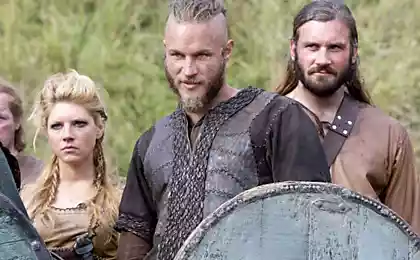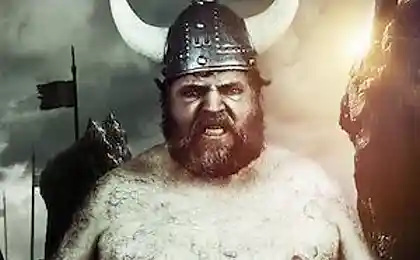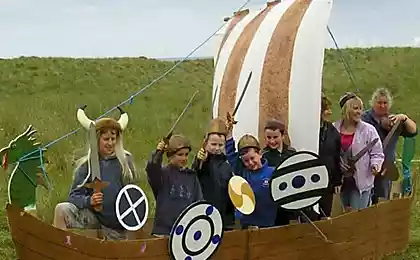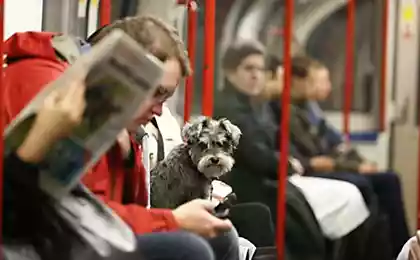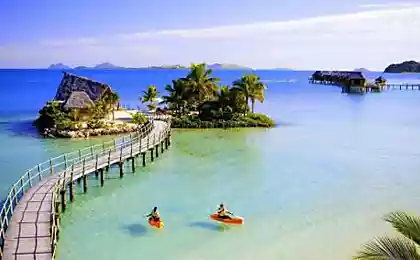1725
The ancient Scandinavian sagas
The ancient Scandinavian sagas brought us the legend of the invincible warrior, who, overwhelmed with the fury of combat with a sword or an ax broke into the ranks of the enemy, destroying everything in its path. Modern scientists do not doubt their reality, but much of the history of berserk and today remains unsolved taynoy.
It - effective and caused quite consciously fighting frenzy. In the Germanic peoples it became a kind of cult of the warrior-beast. Animal-like "transformation" is the highest form of combat rage, known all Germans. Late ancient historians report "Frankish fury," "the wolf warriors" of the people of the Lombards ... This is discharged outside so irresistible force that they could not always resist even close disciplined operation and Art "right battlefield" .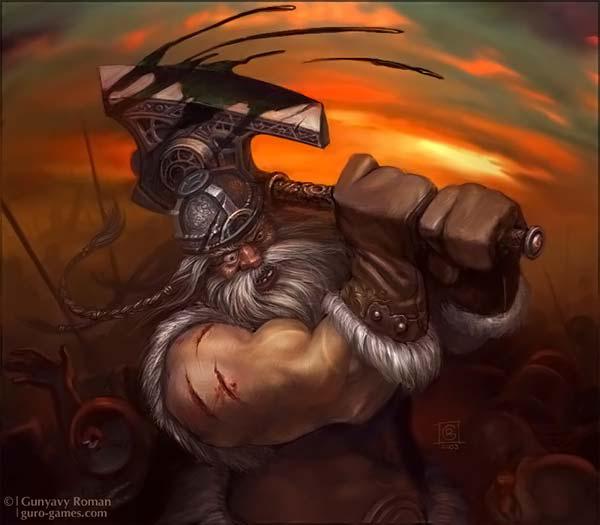
To judge what is the way of the warrior, the beast, we can first of all the Scandinavian sources, as in Scandinavia are warriors existed before the XII-XIII centuries.
Usually it Berserkers started every fight, one of its kind bringing terror to the enemies. If you believe the sagas, they did not use armor, preferring a bearskin. In some cases, it referred to shield the edge they gnawed furiously before the fight. The main weapon the Berserkers were battle-ax and sword, which they owned in sovershenstve.Vo the attack berserker like "getting" the relevant animal. He cast a defensive weapon (or walked with him on purpose, for example, to bite into your shit teeth, plunging into shock the enemy), and in some cases - and offensive; All Scandinavian Vikings were able to fight with his hands but berserkers clearly stood out even at their level.

Berserk does not have to prove that he will survive. He is obliged to pay back many times his life. Berserk is not only to die, he was going to get violent pleasure from the process. By the way, which is why it often remains zhiv.Preobrazhenie berserker during combat (deeper than the Celtic feniya) is sometimes not only psychologically tune it to fight, but also affected the psyche of the enemy - in the opposite spirit. Few people keep cool during a howling rage, bristling with foam warrior beast did not notice any injuries in a frenzy, no fatigue.
However, to call this stratagem, "psychic attack" Still can not. Berserker was seriously convinced that possessed "animal spirit"; and all others, or too believe it or kept his doubts to himself - it was much more useful to health ...
Known historical fact converting a warrior in a wild animal (of course, not literally, but in the ritual and psihopovedencheskom). Traces of this ancient "beast transformation into" military lexicon is stored and heraldic symbols, inherited from antiquity and the Middle Ages. After all, the collective memory of the people living in the symbols and speech, is very strong. From there, and expressions such as "strong as an ox" or "brave as a lion» ...
Familiarity with the treatment of wild animals can be traced to the ancient Germans, and in various forms. For example, imitated beast, he seems to be playing the role of a mentor in the initiation, ie when the young man to join the ranks of adult warriors showed their fighting skills, agility, courage and bravery. One form of initiation has been grappling with the beast, he finishes eating his flesh and drinking his blood. Soldier is supposed to give strength and agility, courage and fury of a wild beast.
This "obsession with the beast" was shown, among other things, that the berserker deliberately imitated the movements of a bear, not only in combat but also during the frequent ritual and magical ceremonies, dances and t.d.
One of the first extant mention of the invincible warrior skald left Torbjörn Hornklovi who wrote at the end of the IX century saga of the victory in the Battle of King Harald Fairhair Havrsforde, creator of the Norwegian kingdom. Chances are that his description of the documentary: "Berserkers, dressed in bearskins, growling, shook swords, biting edge of his rage shield and rushed to his enemies. They were obsessed and did not feel pain, even if they hit a spear. When the battle was won, the soldiers fell exhausted, and sank into a deep sleep ».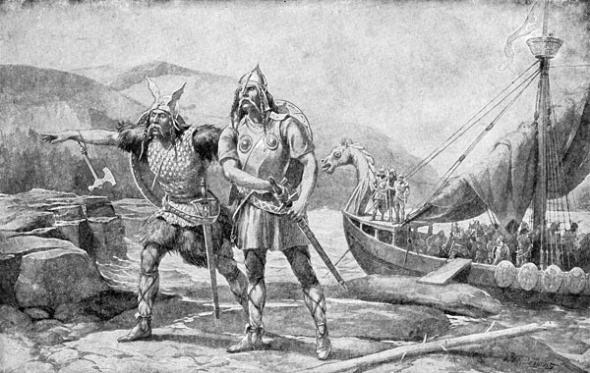
Similar descriptions of actions to fight berserkers can be found in other authors. For example, in the saga Ynglinga "Men Odin threw themselves into battle with no chain mail, and yarilis like rabid dogs or wolves. In anticipation of the fight with impatience and anger bubbling in them, teeth gnawed their shields and arms to the blood. They were strong, like bears or bulls. With an animal roar razili they enemy, and neither fire nor iron does not harm them ... ».
And the, and the enemies of the soldiers assigned to such a variety of magical quality. It was believed, for example, that they had the gift of invulnerability, like the ruthless King Harold, get involved in a fight before all seyavshemu death of left and right. Yet they were considered unusually fierce and strong. Therefore, only one type of warrior-beasts brought in uzhas.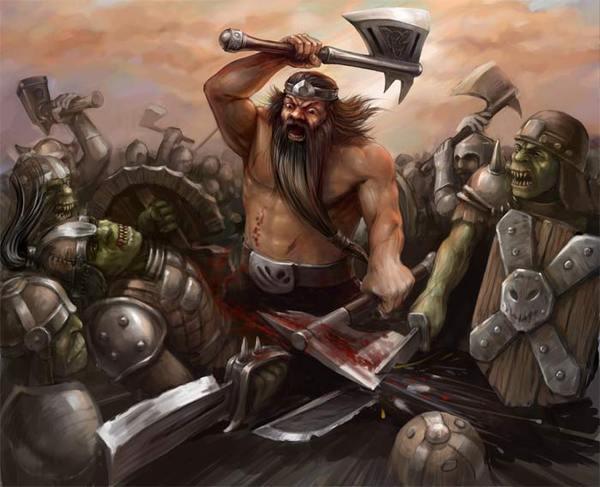
By berserkers pure even the Vikings were treated with sense, midway between admiration and contempt timid reverence. This is - the real "dogs of war"; and if they are able to use it, mainly - in the position of "Taming the Beast".
But the elements berserkerskih training, possession of weapons, and most importantly - specific psychotechnics infiltrated into the life of many soldiers of Sweden, Norway, Denmark and Iceland in particular. Berserkerstvo they kept under control, "including" it only during battles.
In more recent times, the term "berserkr" has become synonymous with the word "soldier", or, rather, "the thief" because he had in mind a warrior who was subject to fits of rage, unbridled rage. In short, he was extremely aggressive, felt no pain, and it is completely unable to control their own behavior. However, in more ancient times, things were different, evidenced by the etymology of the term. "Berserkr" - a "one in a bearskin, incarnated into a bear." Please note: to translate into a bear, not just put it on the skin. The difference of principle. For ordinary fact - a warrior in a bearskin - hidden deeper truth. She says it's a man with a bear, if you will, "bear with a human face." Bearskin is a kind of "magic square", helping to realize the magical act of such a transformation.
Side by side with berserkrom dressed in a bearskin, better warrior bear is "ulfhednar" that is, "someone dressed in a wolf pelt incarnated into a wolf." Family relationship of the warrior and the wolf warrior bear so close that the two terms appear to be synonymous. Saga claim that "ulfhednary" and "Bercero-kry" acted alone sometimes, but more often in small groups, like wolf packs. Even in sagas said their ferocity, cruelty, impudence (ie, the absence of moral norms in behavior) and a passion for orgies. So the tradition of the "werewolves" and "werewolves" look quite pravodopodobnymi.
In pagan times, before applying to the Germans and Scandinavians to Christianity, it was believed that berserkry and ulfhednary possessed downright uncanny siloy.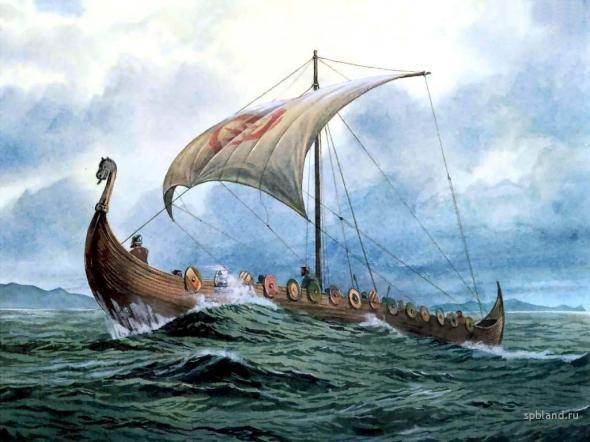
Naturally, in the battle to defeat these fighters it was extremely difficult. Fear is, as they say, big eyes, and therefore appear in the sagas such lines: "One could do so that in the battle his enemies blinded or glohli, or covered fear, or their swords became no sharper than a stick." < br />
Apparently, bring yourself to a state of trance, not without taking certain psychotropic drugs, allows berserk like "turn" in the powerful and invincible bears. Lycanthropy known to many people, as a result of illness or receiving special preparations man identified himself with the beast, and even copied some features of his povedeniya.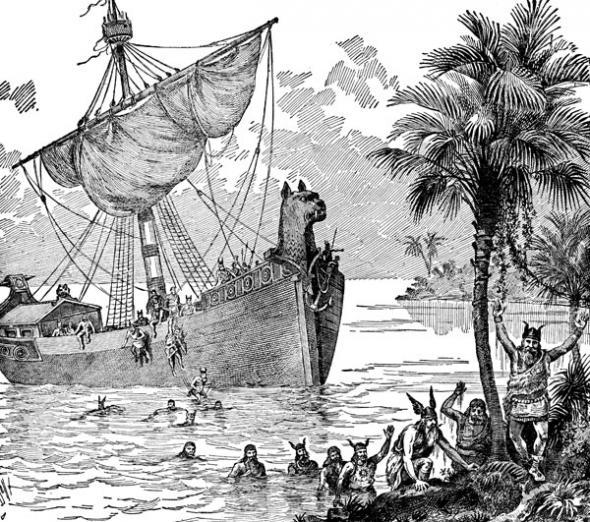
In the sagas knowingly emphasis on invulnerability berserkers. In battle, they are guided not so conscious as the unconscious, allows you to "include" not innate qualities in everyday life - aggravation of the reaction, the extended peripheral vision, insensitivity to pain, and perhaps some kind of psychic ability. In the battle berserker I could feel it flying arrows and spears, foresaw from successive blows of swords and axes, and therefore could not fight off the blow, to cover him with a shield or dodge. It was a truly universal soldiers, but these are only needed for the period of fighting.
The Normans fought frequently, and hence transform Berserker had not rare. Apparently, the battle became ecstasy for them something like a drug addiction and, possibly, almost alone, and it was. Hence, to a peaceful life berserkers were, in principle, are not adapted, becoming dangerous for society because they needed the dangers and thrills. And if there is no war, it is always possible to provoke a fight or engage in looting.
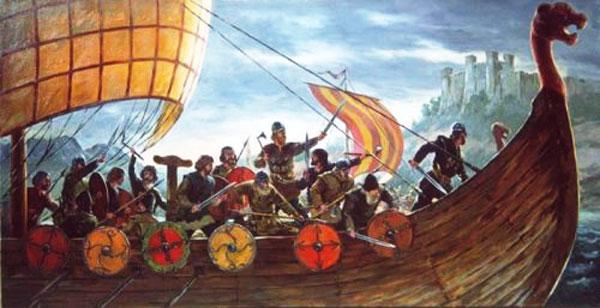
Once sated seizure of foreign lands began to move to the Normans settled calm life, berserkers became superfluous. This is clearly manifested in the sagas, in which the end of the XI century Berserker old heroes are transformed into looters and villains, which declared a merciless war. Curiously, it was recommended to kill the berserkers wooden staves, as against iron "they are invulnerable».
200 years after the Battle of Boksforde to hit Scandinavia Christian missionaries. The old pagan customs and way of life shall be prohibited, in particular, the wrestlers in animal skins. At the beginning of the XII century in the Scandinavian countries even adopted special laws to combat berserkers who ruthlessly destroyed or expelled. Published in Iceland Act 1123 states: "Seen in berserk fury will be signed 3 years of exile." Since then, the soldiers in bearskins disappeared. Some of the former invincible warriors able to integrate into a new life, it was thought that for this they must be baptized. The rest, it is possible that they were the majority of the former military elite, were forced to flee to other lands, or were simply killed.

Since great warriors of ancient Scandinavia remained only in legends. Perhaps they are a feast in the palace of Odin, remembering the drunken cups for victories and defeated former enemies with a smile watching the efforts of scientists to unravel the origin of the word "berserk".

It - effective and caused quite consciously fighting frenzy. In the Germanic peoples it became a kind of cult of the warrior-beast. Animal-like "transformation" is the highest form of combat rage, known all Germans. Late ancient historians report "Frankish fury," "the wolf warriors" of the people of the Lombards ... This is discharged outside so irresistible force that they could not always resist even close disciplined operation and Art "right battlefield" .

To judge what is the way of the warrior, the beast, we can first of all the Scandinavian sources, as in Scandinavia are warriors existed before the XII-XIII centuries.
Usually it Berserkers started every fight, one of its kind bringing terror to the enemies. If you believe the sagas, they did not use armor, preferring a bearskin. In some cases, it referred to shield the edge they gnawed furiously before the fight. The main weapon the Berserkers were battle-ax and sword, which they owned in sovershenstve.Vo the attack berserker like "getting" the relevant animal. He cast a defensive weapon (or walked with him on purpose, for example, to bite into your shit teeth, plunging into shock the enemy), and in some cases - and offensive; All Scandinavian Vikings were able to fight with his hands but berserkers clearly stood out even at their level.

Berserk does not have to prove that he will survive. He is obliged to pay back many times his life. Berserk is not only to die, he was going to get violent pleasure from the process. By the way, which is why it often remains zhiv.Preobrazhenie berserker during combat (deeper than the Celtic feniya) is sometimes not only psychologically tune it to fight, but also affected the psyche of the enemy - in the opposite spirit. Few people keep cool during a howling rage, bristling with foam warrior beast did not notice any injuries in a frenzy, no fatigue.
However, to call this stratagem, "psychic attack" Still can not. Berserker was seriously convinced that possessed "animal spirit"; and all others, or too believe it or kept his doubts to himself - it was much more useful to health ...
Known historical fact converting a warrior in a wild animal (of course, not literally, but in the ritual and psihopovedencheskom). Traces of this ancient "beast transformation into" military lexicon is stored and heraldic symbols, inherited from antiquity and the Middle Ages. After all, the collective memory of the people living in the symbols and speech, is very strong. From there, and expressions such as "strong as an ox" or "brave as a lion» ...
Familiarity with the treatment of wild animals can be traced to the ancient Germans, and in various forms. For example, imitated beast, he seems to be playing the role of a mentor in the initiation, ie when the young man to join the ranks of adult warriors showed their fighting skills, agility, courage and bravery. One form of initiation has been grappling with the beast, he finishes eating his flesh and drinking his blood. Soldier is supposed to give strength and agility, courage and fury of a wild beast.
This "obsession with the beast" was shown, among other things, that the berserker deliberately imitated the movements of a bear, not only in combat but also during the frequent ritual and magical ceremonies, dances and t.d.

One of the first extant mention of the invincible warrior skald left Torbjörn Hornklovi who wrote at the end of the IX century saga of the victory in the Battle of King Harald Fairhair Havrsforde, creator of the Norwegian kingdom. Chances are that his description of the documentary: "Berserkers, dressed in bearskins, growling, shook swords, biting edge of his rage shield and rushed to his enemies. They were obsessed and did not feel pain, even if they hit a spear. When the battle was won, the soldiers fell exhausted, and sank into a deep sleep ».

Similar descriptions of actions to fight berserkers can be found in other authors. For example, in the saga Ynglinga "Men Odin threw themselves into battle with no chain mail, and yarilis like rabid dogs or wolves. In anticipation of the fight with impatience and anger bubbling in them, teeth gnawed their shields and arms to the blood. They were strong, like bears or bulls. With an animal roar razili they enemy, and neither fire nor iron does not harm them ... ».
And the, and the enemies of the soldiers assigned to such a variety of magical quality. It was believed, for example, that they had the gift of invulnerability, like the ruthless King Harold, get involved in a fight before all seyavshemu death of left and right. Yet they were considered unusually fierce and strong. Therefore, only one type of warrior-beasts brought in uzhas.

By berserkers pure even the Vikings were treated with sense, midway between admiration and contempt timid reverence. This is - the real "dogs of war"; and if they are able to use it, mainly - in the position of "Taming the Beast".
But the elements berserkerskih training, possession of weapons, and most importantly - specific psychotechnics infiltrated into the life of many soldiers of Sweden, Norway, Denmark and Iceland in particular. Berserkerstvo they kept under control, "including" it only during battles.
In more recent times, the term "berserkr" has become synonymous with the word "soldier", or, rather, "the thief" because he had in mind a warrior who was subject to fits of rage, unbridled rage. In short, he was extremely aggressive, felt no pain, and it is completely unable to control their own behavior. However, in more ancient times, things were different, evidenced by the etymology of the term. "Berserkr" - a "one in a bearskin, incarnated into a bear." Please note: to translate into a bear, not just put it on the skin. The difference of principle. For ordinary fact - a warrior in a bearskin - hidden deeper truth. She says it's a man with a bear, if you will, "bear with a human face." Bearskin is a kind of "magic square", helping to realize the magical act of such a transformation.
Side by side with berserkrom dressed in a bearskin, better warrior bear is "ulfhednar" that is, "someone dressed in a wolf pelt incarnated into a wolf." Family relationship of the warrior and the wolf warrior bear so close that the two terms appear to be synonymous. Saga claim that "ulfhednary" and "Bercero-kry" acted alone sometimes, but more often in small groups, like wolf packs. Even in sagas said their ferocity, cruelty, impudence (ie, the absence of moral norms in behavior) and a passion for orgies. So the tradition of the "werewolves" and "werewolves" look quite pravodopodobnymi.
In pagan times, before applying to the Germans and Scandinavians to Christianity, it was believed that berserkry and ulfhednary possessed downright uncanny siloy.

Naturally, in the battle to defeat these fighters it was extremely difficult. Fear is, as they say, big eyes, and therefore appear in the sagas such lines: "One could do so that in the battle his enemies blinded or glohli, or covered fear, or their swords became no sharper than a stick." < br />
Apparently, bring yourself to a state of trance, not without taking certain psychotropic drugs, allows berserk like "turn" in the powerful and invincible bears. Lycanthropy known to many people, as a result of illness or receiving special preparations man identified himself with the beast, and even copied some features of his povedeniya.

In the sagas knowingly emphasis on invulnerability berserkers. In battle, they are guided not so conscious as the unconscious, allows you to "include" not innate qualities in everyday life - aggravation of the reaction, the extended peripheral vision, insensitivity to pain, and perhaps some kind of psychic ability. In the battle berserker I could feel it flying arrows and spears, foresaw from successive blows of swords and axes, and therefore could not fight off the blow, to cover him with a shield or dodge. It was a truly universal soldiers, but these are only needed for the period of fighting.
The Normans fought frequently, and hence transform Berserker had not rare. Apparently, the battle became ecstasy for them something like a drug addiction and, possibly, almost alone, and it was. Hence, to a peaceful life berserkers were, in principle, are not adapted, becoming dangerous for society because they needed the dangers and thrills. And if there is no war, it is always possible to provoke a fight or engage in looting.

Once sated seizure of foreign lands began to move to the Normans settled calm life, berserkers became superfluous. This is clearly manifested in the sagas, in which the end of the XI century Berserker old heroes are transformed into looters and villains, which declared a merciless war. Curiously, it was recommended to kill the berserkers wooden staves, as against iron "they are invulnerable».
200 years after the Battle of Boksforde to hit Scandinavia Christian missionaries. The old pagan customs and way of life shall be prohibited, in particular, the wrestlers in animal skins. At the beginning of the XII century in the Scandinavian countries even adopted special laws to combat berserkers who ruthlessly destroyed or expelled. Published in Iceland Act 1123 states: "Seen in berserk fury will be signed 3 years of exile." Since then, the soldiers in bearskins disappeared. Some of the former invincible warriors able to integrate into a new life, it was thought that for this they must be baptized. The rest, it is possible that they were the majority of the former military elite, were forced to flee to other lands, or were simply killed.

Since great warriors of ancient Scandinavia remained only in legends. Perhaps they are a feast in the palace of Odin, remembering the drunken cups for victories and defeated former enemies with a smile watching the efforts of scientists to unravel the origin of the word "berserk".

